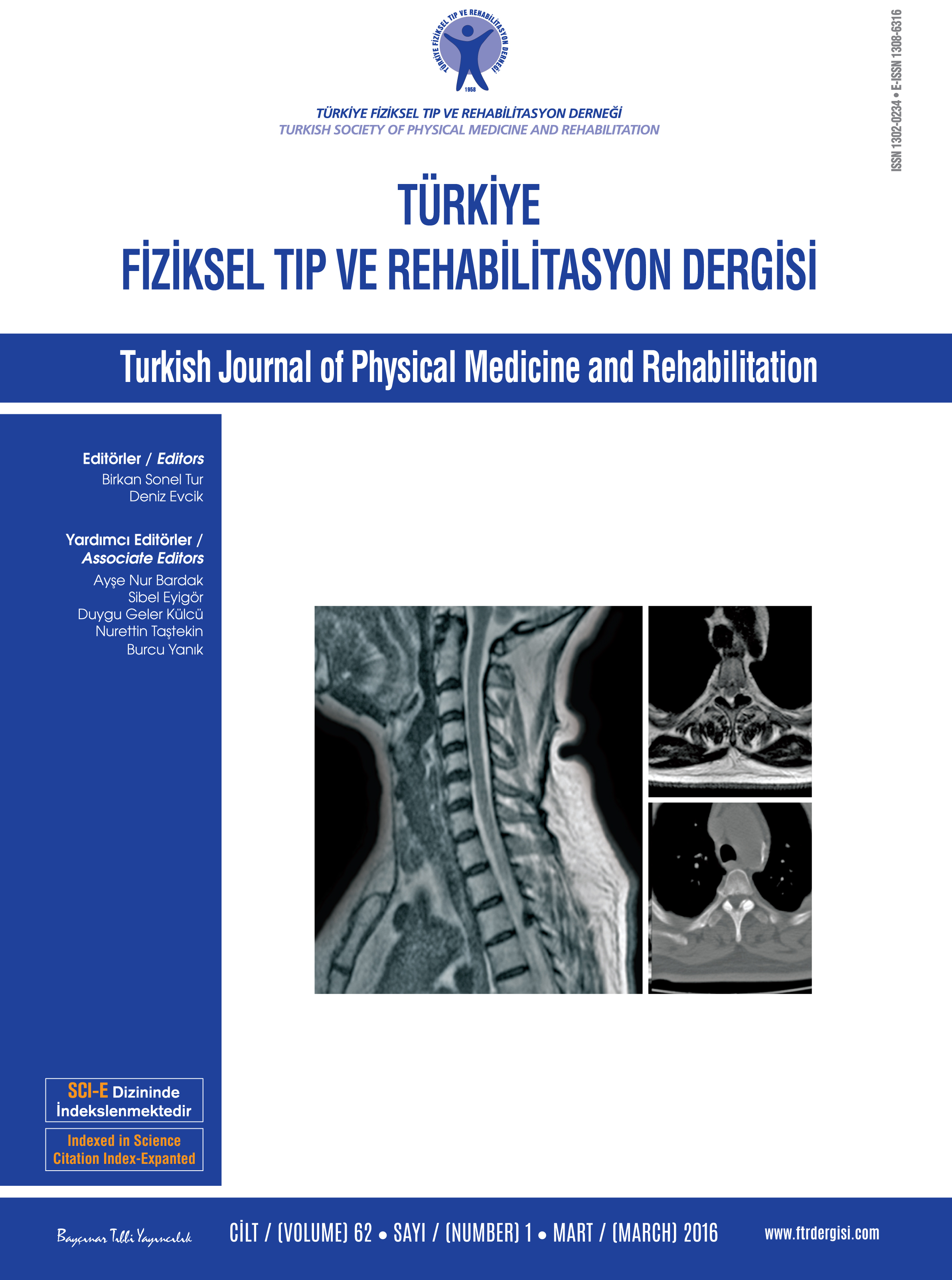Comparison of the effects of zoledronic acid and exercise on bone mineral density and biomechanics in rats with induced osteoporosis
2 Fırat Üniversitesi Tıp Fakültesi Fizik Tedavi ve Rehabilitasyon Anabilim Dalı, Elazığ, Türkiye
3 Fırat Üniversitesi Tıp Fakültesi Fizyoloji Anabilim Dalı, Elazığ, Türkiye
4 Fırat Üniversitesi Tıp Fakültesi Kadın Hastalıkları ve Doğum Anabilim Dalı, Elazığ, Türkiye DOI : 10.5606/tftrd.2016.22804 Objectives: This study aims to compare the effects of zoledronic acid and exercise on the bone mineral density (BMD) and biomechanics in rats with induced osteoporosis.
Materials and methods: Thirty-two three-month-old female Wistar albino rats were enrolled in this study. In the control group (n=8), only skin incision was performed. Bone mineral density was measured in the ovariectomized rats after two months. The rats with osteopenia were randomly divided into three groups. The first group (n=8) received single dose 0.1 mg/kg intravenous zoledronic acid, while the second group (n=8) underwent treadmill exercise test. The third group (n=8) received no medication or exercise. All rats were sacrificed at the end of week 12. The BMD of the right femurs was measured. The three-point bending test was performed on the left femurs.
Results: The mean BMD values 12 weeks after surgical menopause was significantly higher in the control group than the other groups (p<0.05). The lowest BMD values were found in the ovariectomy group (p<0.05). No statistically significant difference was found between the BMD values of zoledronic acid group and exercise group (p>0.05). The mean maximum stress values of the samples from the control group were significantly higher than the other groups (p<0.05). The mean maximum strain value in the control group was higher than the zoledronic acid group and ovariectomy group (p<0.05). Ovariectomy group had a lower biomechanical strength compared to the other groups. The maximum strain values of the exercise group were significantly higher than the zoledronic acid group and ovariectomy group (p<0.05).
Conclusion: Our study results show that exercise is as effective as the zoledronic acid therapy in the treatment and prevention of osteoporosis.
Keywords : Biomechanics; exercise; osteoporosis; zoledronic acid
















